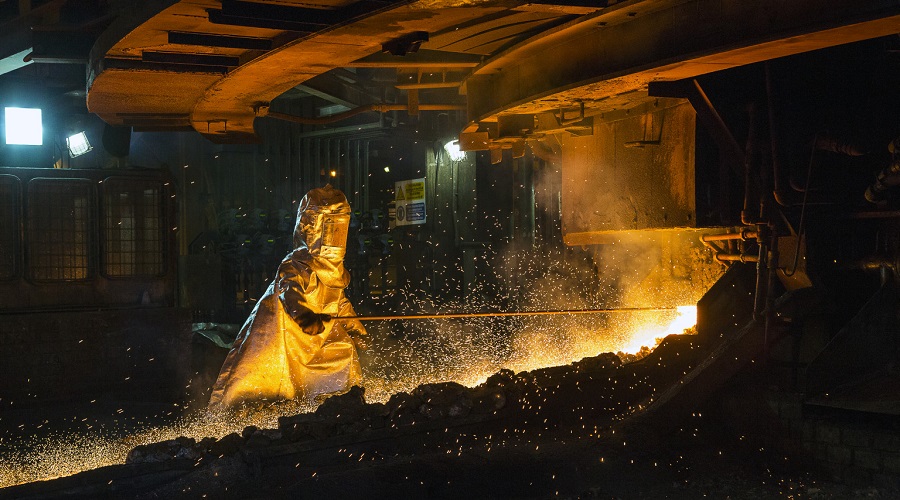Home: Indonesia, the puzzle of nickel’s competing narratives

(The opinions expressed here are those of the author, Andy Home, a columnist for Reuters.)
The global nickel market recorded a supply-demand surplus of 108,000 tonnes last year and is on track to record another 45,000-tonne surplus this year, the International Nickel Study Group (INSG) found.
Most analysts seem to agree.
Reuters’ quarterly poll, out on Thursday, showed a median forecast that refined nickel supply will exceed demand by 31,000 tonnes this year and 66,500 tonnes next year.
Such assessments feed into a bearish price landscape, with the poll generating a median London Metal Exchange (LME) cash forecast of $16,904 per tonne this year and $16,500 in 2022. LME three-month nickel is trading around $17,615.
Excess metal, clearly visible in the form of the 262,044 tonnes of refined nickel sitting in LME warehouses, has damped some of the market’s previous bull flames.
But the INSG warns that “there is a degree of uncertainty” in its forecasts, specifically around Indonesia, the world’s largest producer.
Moving targets
Nickel usage fell by 1% last year but is expected to roar back by 12% to 2.67 million tonnes this year, the INSG said after its latest twice-yearly meeting.
The metal’s demand profile is dominated by its usage in stainless steel, whose global production slid by 2.5% last year, the International Stainless Steel Forum said.
Chinese stainless production started rebounding strongly in the second half of last year and the recovery is expected to spread to the rest of the world this year.
Meanwhile, usage in electric vehicle (EV) batteries is small by comparison but “will continue to have a positive impact on nickel usage,” going forward, the INSG said.
Demand is not nickel’s immediate problem.
The only certainty is that Indonesian mine production, which fell by 10% last year after the export ban, is growing fast
Rather, it is the strength of refined production growth, up 5% last year, despite a drop in mined output, and is forecast to rise another 9% this year to 2.718 million tonnes.
However, as the INSG flags, global production is a moving target, quite literally as China’s nickel pig iron (NPI) sector migrates to Indonesia after the country banned the export of unprocessed ore at the start of 2020.
This mass off-shoring exercise is clear to see in China’s shifting nickel trade flows.
Imports of nickel ore collapsed by 30% last year as Indonesia cut off the export taps and other suppliers, such as the Philippines, failed to compensate for the loss. Imports of ferronickel, by contrast, surged by 80%. Indonesian NPI accounted for 79% of the 3.44 million tonnes imported under this trade category.
China’s NPI production is declining. Indonesia’s is rising.
The problem facing the INSG’s statistical committee and everyone else is that this dynamic is highly fluid, both in terms of speed and scale.
It may take some time for the process to find its equilibrium and until it does, pinning down the nickel market’s supply-demand balance will remain challenging.
Indonesian puzzle
Indonesia is also the source of an even bigger uncertainty clouding nickel’s prospects.
China’s Tsingshan Group, a self-proclaimed disruptor of both the stainless steel and nickel industries, poured a bucket of cold water over the market’s EV dreams in March, when it said it intended to produce battery-grade material from nickel matte.
This would effectively close the processing gap between the sort of nickel used by the stainless steel industry and that used for lithium-ion battery production.
Where Tsingshan is leading, others are following as the Indonesian government tries to build out an EV materials supply chain from its abundant nickel resources.
Timelines to commercial production and costs are highly uncertain. So too is the carbon footprint of the technology required to complete the ore-to-sulphate processing route, which is a big potential problem for an input into a green product, such as an electric vehicle.
The only certainty is that Indonesian mine production, which fell by 10% last year after the export ban, is growing fast, up by 53% in the first two months of this year, the latest INSG monthly bulletin said.
Cloudy outlook
The nickel price hasn’t recovered from Tsingshan’s shock announcement. LME three-month metal was flying high above $20,000 per tonne in February but collapsed below the $16,000 level in early March.
Even after a copper-inspired rally this week, nickel remains the under-performer of the LME base metals suite, up by 1.2% since the start of January, in contrast to copper’s stellar 26% price gains.
The INSG’s forecast for a second year of oversupply feeds into a newly emerging bear narrative that nickel’s usage in electric vehicles may not be the one-way boom bet it seemed even a few months ago.
But there are many unanswered questions, including the most basic of how much Indonesian production grow and what form of the metal it will take.
The country has embarked on a giant nickel processing experiment, which if successful would fuse the nickel chemistry split between battery and stainless steel applications. That in turn would undermine the bull argument that prices must rise to incentivise more production of the “right” type of nickel.
The emphasis is on the word “if” because there will be no resolution of nickel’s competing narratives until the experiment starts generating tangible results.
The big known unknown at the heart of the nickel market remains. Indeed, it’s the market’s defining feature right now.
(Editing by Barbara Lewis)
More News
{{ commodity.name }}
{{ post.title }}
{{ post.date }}

Comments